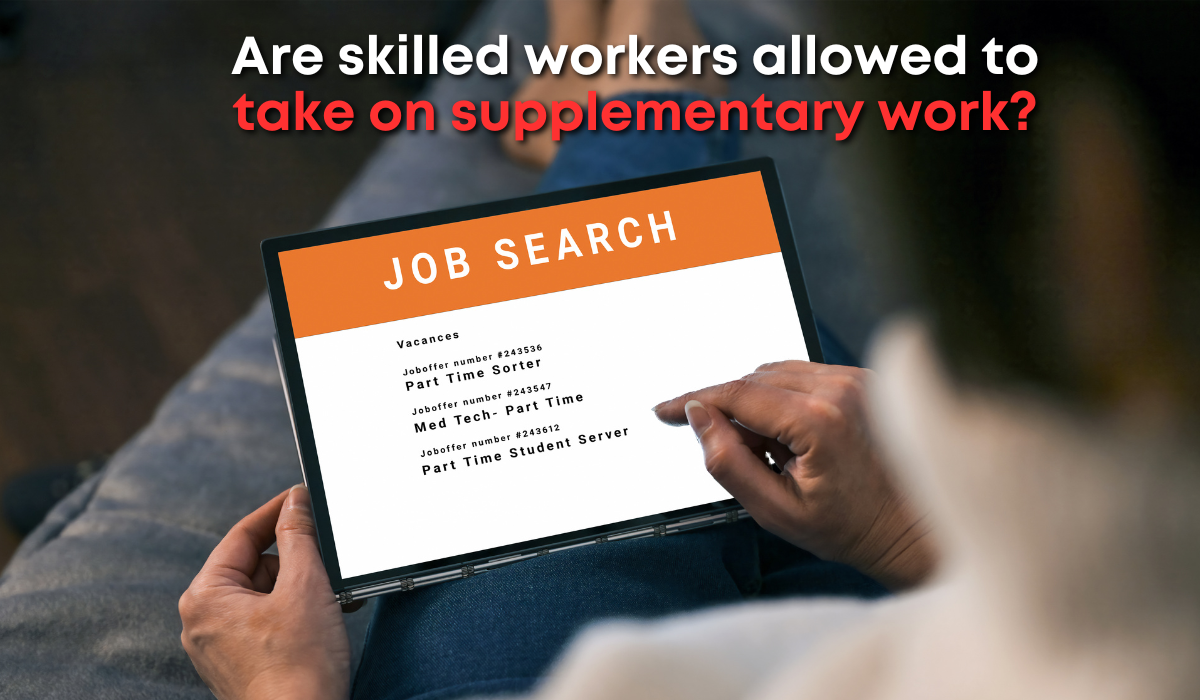The latest Home Office guidelines, effective from 4 April 2024, bring into focus crucial aspects of these visas, particularly the nuances of supplementary employment. Find out a comprehensive overview of these regulations, aiding both visa holders and employers in staying aligned with the law.
What is supplementary employment?
Supplementary employment allows Skilled Worker visa holders the latitude to undertake additional work outside their primary role listed on the Certificate of Sponsorship (CoS). This flexibility comes with specific conditions:
- Eligible occupations: The extra work must align with occupations detailed in Tables 1, 2, or 3 of Appendix Skilled Occupations.
- Working hour limitation: This employment must not surpass 20 hours per week and should be undertaken outside the primary job’s regular hours.
- Location of work: The visa holder can engage in this supplementary work during the validity of their visa. In cases where the visa holder is a General Practice trainee, this period extends up to four months after their CoS expiry date, irrespective of whether they continue employment with the sponsor on their CoS.
A crucial aspect of supplementary employment is that Skilled Worker visa holders are not required to inform the Home Office, provided their job meets these stipulated criteria.
What is secondary employment?
Secondary employment comes into play when additional work does not fit into the supplementary category, often because it requires over 20 hours weekly. Here, the rules become more stringent:
- Requirement of a new CoS: A fresh CoS is mandatory for the secondary job. The visa holder must then apply to vary their existing permission to include this job.
- Application essentials: This includes comprehensive personal details, the CoS reference number from the primary permission, and the expiry date of the current permission.
- Timing of the application: The application can only be made after the individual starts working with their first sponsor.
Upon receiving approval, the visa holder will have dual sponsorship status, requiring an update to their BRP. This updated BRP will indicate “2 CoS as Letter,” denoting secondary employment. The accompanying approval letter will also detail both primary and secondary sponsors, including their respective end dates of employment, which should be carried with the BRP as a right-to-work verification.
Why compliance is important?
Understanding and complying with these regulations is essential for Skilled Worker visa holders. They affect not only their current legal status and work rights in the UK but also have implications for their future immigration applications. Employers, too, are obligated to ensure their understanding and adherence to these rules, provide the necessary support to their employees under these visa conditions, and prevent any breaches that could lead to legal issues.
While the UK Skilled Worker visa offers a wealth of employment opportunities, it comes wrapped in specific conditions for supplementary and secondary work. Both visa holders and employers must navigate these regulations with care and precision to remain compliant and maximise the potential of the employment opportunities available within the UK immigration framework. Understanding these subtleties can be the difference between a seamless immigration experience and unforeseen legal complications.
Get in touch: For a comprehensive understanding of your options or queries on UK immigration matters, contact GigaLegal Solicitors at 02074067654 or click here to book a no-obligation consultation with an immigration expert.


